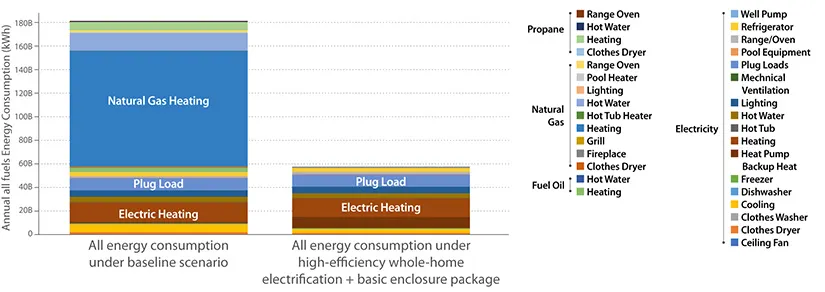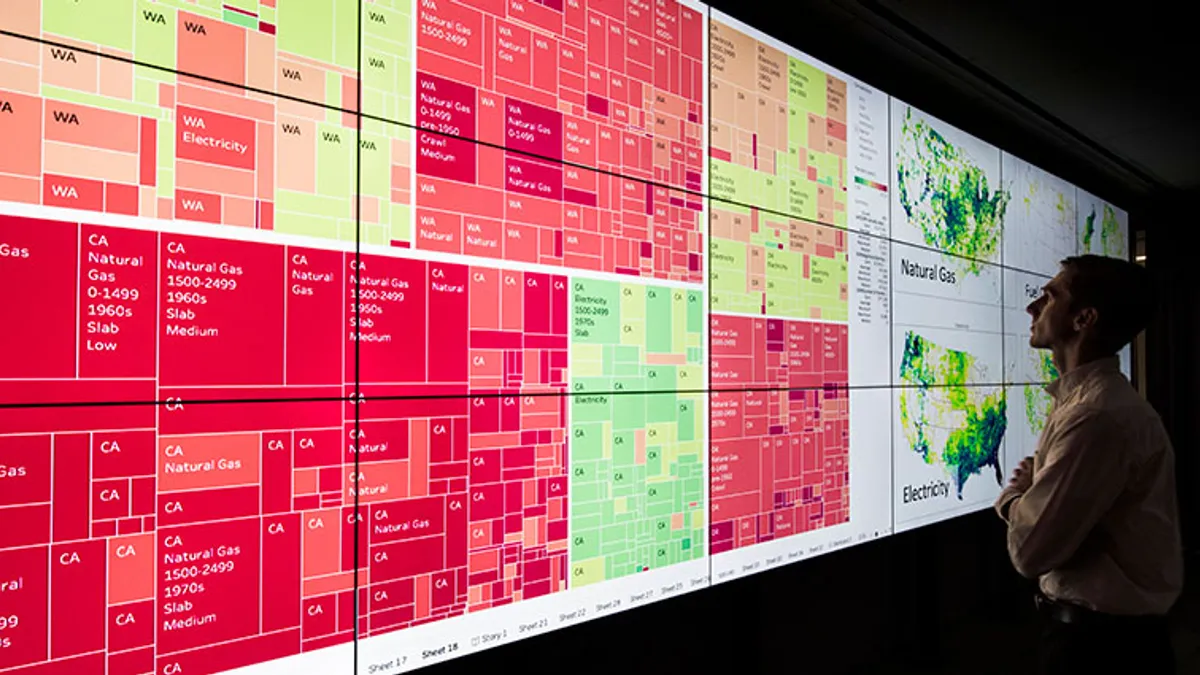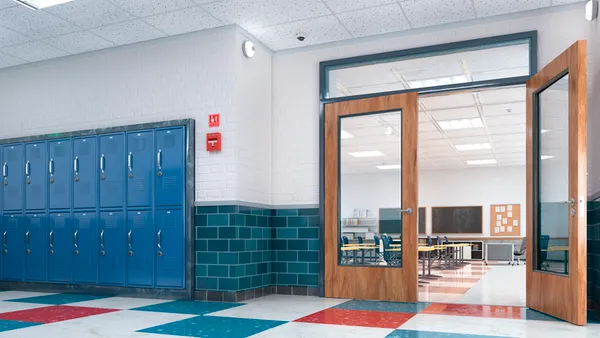Dive Brief:
- The U.S. Department of Energy’s National Renewable Energy Laboratory has created a free, publicly available dataset that provides “foundational” baseline energy consumption profiles and potential impacts of electrification and energy efficiency upgrade scenarios for the U.S. building stock, according to a release.
- The federal research organization's End-Use Load Profiles data models detail energy usage data for specific building types to allow further refinement of building characteristics. The tool is designed to accelerate electrification planning, emissions analysis, utility resource planning and load forecasting potential changes in the energy consumption of U.S. buildings under different “what-if” energy efficiency and electrification upgrade scenarios.
- Andrew Parker, a researcher in NREL’s commercial buildings research group, said key decision-makers, including utilities, consultants and building operators, can use this dataset to determine how buildings in their area use energy rather than having to “start from scratch.”
Dive Insight:
The U.S. Environmental Protection Agency says that buildings are responsible for 40% of total energy use, 75% of all electricity use and 35% of carbon emissions in the country. Against that backdrop, electrification is seen as a backbone of successful building decarbonization strategies.
But electrification efforts pose a series of unknowns in terms of potential energy savings, emissions benefits and the need to upgrade grids or electrical panels, Rewiring America’s director of research, Cora Wyent, said in the release.
To provide answers to these “unknowns” of building decarbonization, NREL researchers created the End-Use Load Profiles data using baseline load profiles, with separate models based on U.S. residential and commercial building stock. These were then compared to electric load data from 11 utility providers, 2.3 million power meters, state-by-state natural gas consumption information and data from the U.S. Energy Information Administration.
The final dataset describes how 350,000 commercial and 550,000 residential building models currently use energy, which represents about 65% of commercial floor space and a building model for approximately one of every 240 residential buildings in the U.S.

NREL researcher Elaina Present said options available for representing buildings’ current or potential energy use were both limited and expensive before the government research body released its End-Use Load Profile data.
“It was especially difficult to capture the effect of diversified loads, requiring us to do significant simplification in our analysis,” Jared Landsman, senior managing consultant at Energy and Environmental Economics, said in a statement. “The release has really changed the game in providing reliable diversified building end-use loads for our building decarbonization studies."
Parker said creating the dataset was a “painstaking process, because it involved mapping meter data to buildings, which included many technical steps.”
NREL noted that the project involved partnerships with 42 organizations to gain access to building and energy usage data for specific building types, such as schools, which allowed the team to refine building characteristics and load profiles. It also said that new data will be released about every six months.
The organization is also working to include more options for energy efficiency upgrades, building electrification and other electric load growth into upcoming releases of the load profiles, it said. The team will also use data to develop “novel analysis frameworks for utilities, states, and cities,” filling data gaps and mitigating risk as technology deployment outpaces traditional multiyear field demonstrations, NREL said.














